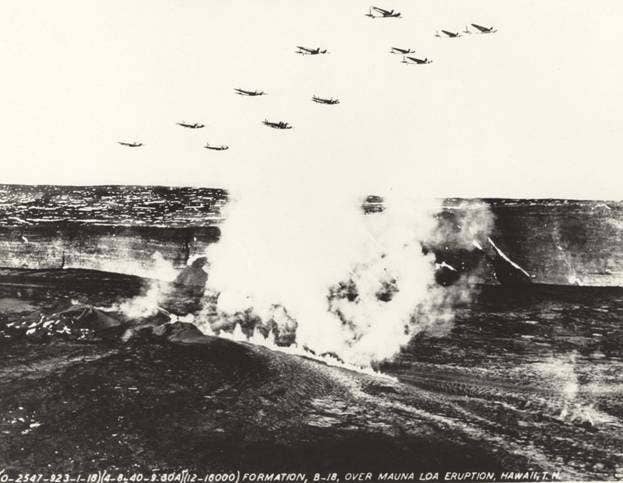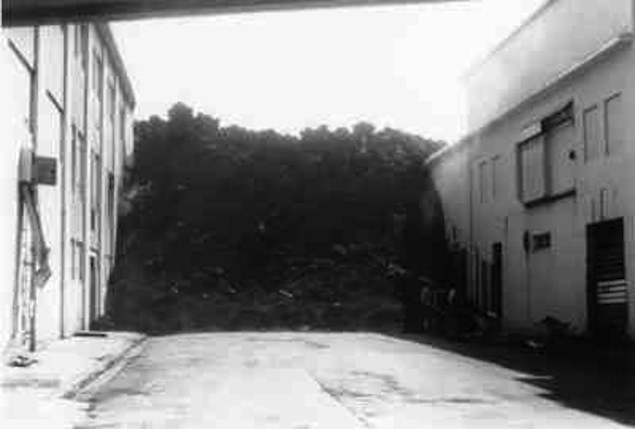Kilauea volcano on Hawaii's Big Island has been erupting continuously since 1983. The current flow started on June 27 and so far has advanced 13 miles downslope toward Pahoa, where over 1,000 residents have been tracking its path in anticipation. Homeowners will be allowed to watch their structures burn, when they eventually meet their fate.
Obviously, the lava is scary, but why can't it be stopped? Here's a breakdown of some of the times people have tried.

Hawaii
In 1935, the U.S. government actually bombed lava flowing from Hawaii's Mauna Loa. General George S. Patton, before he became famous for his efforts in World War II, decided to find out if dropping bombs on lava tunnels would force them to collapse.
It didn't work, as the bombs didn't have enough accuracy to hit the tunnels or enough strength to break through the lava's hardened crust. The flow stopped on its own in January the next year.
In 1960, a University of Hawaii volcanologist used bulldozers to build a wall, trying to divert a flow from Kilauea that was heading towards Puna. The lava went over the wall, so he built another wall. Lava went over that wall too.
"Eventually he gave up," said UH Geology Professor Michael Garcia. "He said if Pele is going to take it, she's going to take it."
People from Hawaii often say one does not mess with Pele, the Hawaiian goddess who embodies the volcano, whose immense power should always be respected.
Two decades later, as lava was heading straight for the town of Kalapana, residents tried to spray the flow with water in an attempt to cool and stop it. The water may have cooled the lava a bit, but it didn't stop it as it continued on its path and destroyed the town.

Iceland
In Iceland in 1973, crews used billions of gallons of water to try to cool lava from Eldfell volcano that was flowing towards an important harbor in the town of Vestmannaeyjar. The water was drained from the harbor over the course of five months and sprayed onto the lava. The lava did spare the harbor, but it is believed it cooled because the flow had stopped on its own.
Volcanologist says efforts should instead be put into predicting eruptions. Another 1973 eruption in Iceland covered the entire town of Heimaey. It's called the "Pompeii of the North" because the uncovered properties were perfectly preserved, with tables still set for breakfast and clothes ready to be put on in the morning.

Italy
In 1983 after Mount Etna erupted, officials built trenches and rock walls to divert the lava from three towns. The first wall was overrun, but a second wall was able to divert the lava away from a main tourist area.
A decade later, Etna erupted again, and officials hoped to save the town of Zafferana. This time, they diverted the lava with explosives and built a trench to catch the redirected flow. Only part of the flow was diverted, so concrete blocks were dropped into the lava, moving the remaining flow away from the town.
Even though these sound like success stories, evidence shows that these diversions only worked because the lava stopped flowing from its source.
For hundreds of years people living below the rupture of Mount Etna have tried to battle the lava. In 1669, residents of the village of Catania fought against the molten lava and built a path for it to flow down.
The neighboring town of Paterno was not pleased, because the diversion would send the lava towards their community. They closed up the breach and the lava went straight towards the town of Catania, engulfing about half of it.
So while it may be possible for lava to be temporarily diverted, unless the flow stops completely, there will likely be further problems as it's impossible to predict where the lava will go. Flows are influenced by many factors, including subtle changes in topography, the quantity of lava streaming out of the volcano, and cracks in the rift zone that lava might enter.
One Pahoa resident has built a 7-foot-tall berm and dug a 20 foot-wide ditch around his property in anticipation of the current lava flow, Hawaii News Now reported. If the flow was diverted away from one home and went towards another, the individual who moved it would likely face a whole set of practical, financial, and legal problems, as well as the hatred of one's neighbors.
Officials in Hawaii have prepared for the lava by building alternate roads and reinforcing electrical poles, in an effort to keep the community connected.
Crews have wrapped at least four power poles with heat-resistant material and so far one of the poles burned at the base and sunk 10-feet on Tuesday. Crews sprayed water on the poles to cool it. As of Wednesday, it was still operating.
